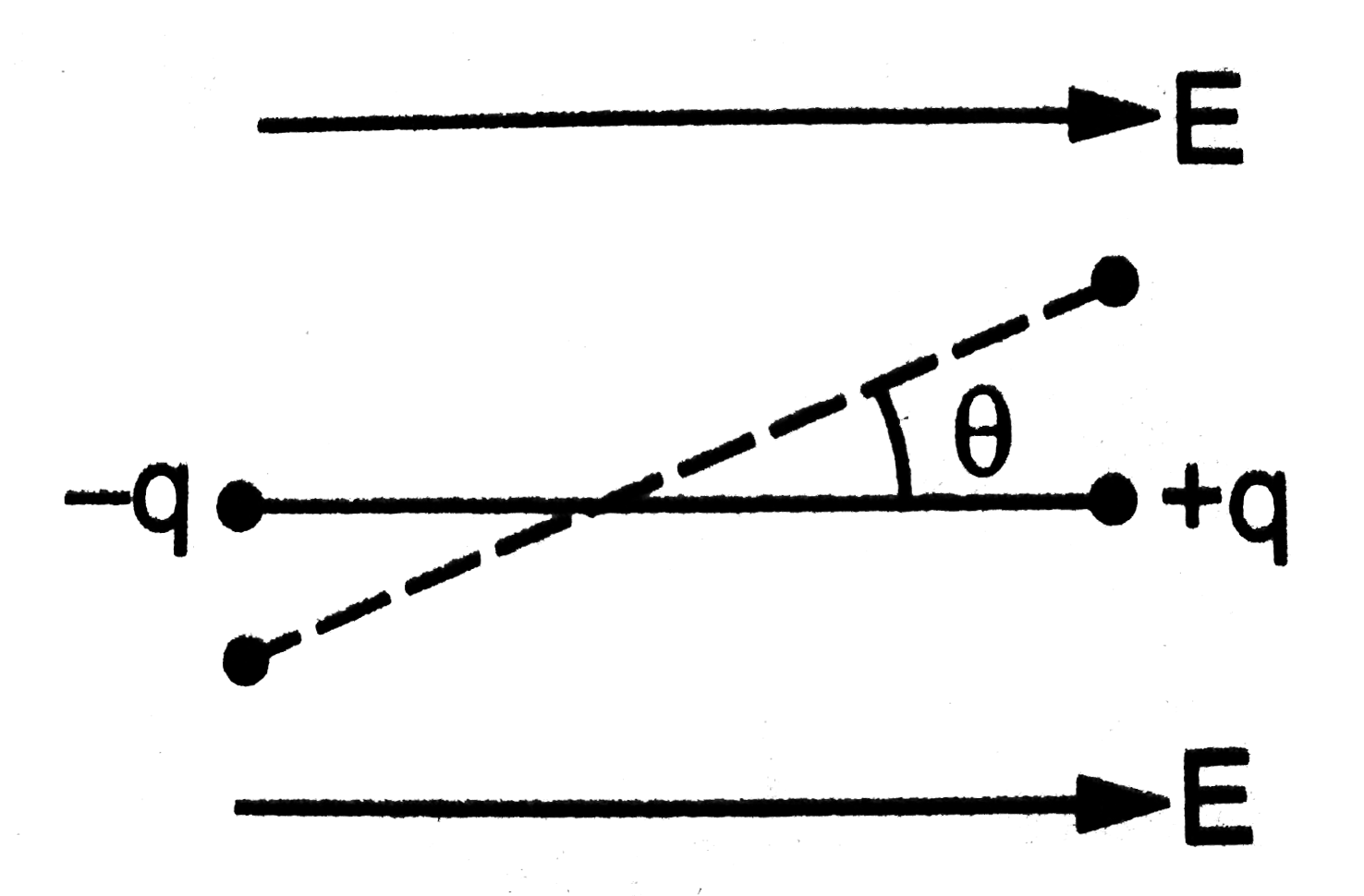An electric dipole is placed in uniform electric field as shown in the figure. The dipole is slightly rotated about its centre and released. Select the correct statement(s).
The motion of dipole is oscillatory but not SHM
The motion of dipole is SHM
The motion of dipole is neither oscillatory nor SHM
The motion of dipole is oscillatory
The correct Answer is:B, D
To solve the problem regarding an electric dipole placed in a uniform electric field and slightly rotated, we can follow these steps:
1. Understanding the Electric Dipole:
An electric dipole consists of two equal and opposite charges, +Q and -Q, separated by a distance L. The dipole moment P is given by:
P=Q⋅L
where L is the vector pointing from the negative charge to the positive charge.
2. Torque on the Dipole:
When the dipole is placed in a uniform electric field E, it experiences a torque τ given by:
τ=P×E
The magnitude of the torque can be expressed as:
τ=PEsinθ
where θ is the angle between the dipole moment and the electric field.
3. Small Angle Approximation:
If the dipole is slightly rotated, the angle θ is small. For small angles, we can use the approximation:
sinθ≈θ(in radians)
Thus, the torque becomes:
τ≈PEθ
4. Relating Torque to Angular Acceleration:
The torque is also related to the moment of inertia I and angular acceleration α by:
τ=Iα
For small oscillations, we can express angular acceleration as:
α=d2θdt2
5. Equating the Two Expressions for Torque:
Setting the two expressions for torque equal gives:
PEθ=Id2θdt2
6. Forming the Equation of Motion:
Rearranging the equation leads to:
d2θdt2+PEIθ=0
This is the standard form of simple harmonic motion (SHM).
7. Finding the Time Period:
The time period T of SHM is given by:
T=2π√IPE
8. Conclusion:
Since the dipole undergoes oscillations in the electric field, we conclude that:
- The dipole exhibits simple harmonic motion (SHM).
- The motion is oscillatory in nature.
Final Answer:
The correct statements are:
- The dipole undergoes simple harmonic motion (SHM).
- The motion is oscillatory.
An electric dipole consists of two equal and opposite charges, +Q and -Q, separated by a distance L. The dipole moment P is given by:
P=Q⋅L
where L is the vector pointing from the negative charge to the positive charge.
When the dipole is placed in a uniform electric field E, it experiences a torque τ given by:
τ=P×E
The magnitude of the torque can be expressed as:
τ=PEsinθ
where θ is the angle between the dipole moment and the electric field.
If the dipole is slightly rotated, the angle θ is small. For small angles, we can use the approximation:
sinθ≈θ(in radians)
Thus, the torque becomes:
τ≈PEθ
The torque is also related to the moment of inertia I and angular acceleration α by:
τ=Iα
For small oscillations, we can express angular acceleration as:
α=d2θdt2
Setting the two expressions for torque equal gives:
PEθ=Id2θdt2
Rearranging the equation leads to:
d2θdt2+PEIθ=0
This is the standard form of simple harmonic motion (SHM).
The time period T of SHM is given by:
T=2π√IPE
Since the dipole undergoes oscillations in the electric field, we conclude that:
- The dipole exhibits simple harmonic motion (SHM).
- The motion is oscillatory in nature.
The correct statements are:
- The dipole undergoes simple harmonic motion (SHM).
- The motion is oscillatory.
Similar Questions
An electric dipole placed in a nonuniform electric field experience
View SolutionAn electric dipole is placed in a uniform electric field. The net electric force on the dipole
View SolutionAn electric dipole placed in a uniform electric field experiences, in general
View SolutionAn electric dipole is placed in an electric field generated by a point charge
View Solutionshow an electric dipole formed by two
. particles fixed at the ends of a light rod of length l. The
. mass of each particle is m and the charges are -q and
. +q . The system is placed in such a way that the dipole
. axis is parallel to a uniform electric field E that exist
. in the region. The dipole is slightly rotated abut its
. centre and released. Show that for small angular
. displacement, the motion is anguler simple harmonic
. and find its time period.

View SolutionAn electric dipole is placed at the centre of a sphere. Select the correct alternative(s).
View SolutionAn electric dipole placed in a uniform electric field experiences maximum moment of couple when the dipole is placed
View SolutionAn electric dipole is placed at an angle of 30∘ to a non-uniform electric field. The dipole will experience
View SolutionAn electric dipole is plced at an angle of 30∘ to a nonuniform electric field. The dipole will experience
View SolutionWhen an electric dipole is placed in a uniform electric field, a couple acts on it. The moment of couple will be maximum when the dipole is placed
View Solution
